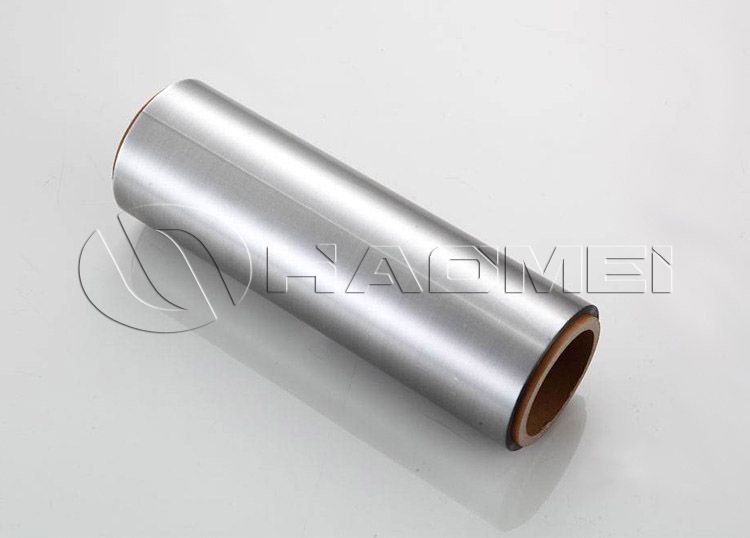With the booming new energy vehicle and energy storage industries, battery aluminum foil, as a key material for lithium-ion battery cathode current collectors, is of undeniable importance. As industry demands for battery energy density, safety, and lightweighting continue to rise, battery aluminum foil is moving towards ultra-thin thickness (≤10μm), which undoubtedly poses extremely stringent challenges to its alloying process.

Core Difficulties in Alloying Processing
Rolling Limit Dilemma
When aluminum foil thickness is reduced to below 10μm, it becomes a process minefield. The foil's resistance to plastic deformation increases dramatically, making it highly susceptible to breakage during rolling, much like a fragile thread vulnerable to intense tension. Surface pinholes also pose a significant risk. These tiny pinholes act like hidden time bombs within the battery, severely impacting its performance and safety.
For example, in common alloy grades like 1235 aluminum foil and 1145, the changes in their internal microstructure during ultra-thin rolling make the material's deformation behavior extremely complex, making conventional rolling process parameters unable to meet these challenges. The Difficulty of Balancing Performance
Battery aluminum foil requires a delicate balance between high tensile strength (≥260 MPa) and low elongation (≤3%)—a delicate tightrope walk. During the battery's charge and discharge cycles, the foil is subjected to immense stress. If the tensile strength is insufficient, the foil will become as limp as soft noodles, leading to battery structural failure.
Excessive elongation, on the other hand, can lead to excessive deformation or even brittle fracture under stress, short-circuiting the battery. For example, in the 1100 alloy series, R&D personnel often find that while increasing its strength, its elongation decreases uncontrollably. This contradiction presents an insurmountable chasm.
The Difficulty of Microscopic Precision Control
In the microscopic world of battery aluminum foil, precision control is a battle at the atomic scale. Thickness tolerances must be consistently maintained within ±0.1μm, equivalent to precise manipulation at the scale of one thousandth the thickness of a human hair. The deflection of the rollers in traditional rolling mills acts like a demonic interference, severely impacting thickness uniformity.
Even the slightest fluctuation in sheet shape, such as center and edge waves, can have a significant impact on the thickness uniformity of aluminum foil, like a butterfly effect. To achieve this micro-precision control, companies must invest heavily in advanced rolling mill equipment, equipped with high-precision automatic sheet shape and thickness control systems. These mills rely on complex techniques such as dynamic adjustment of rolling force distribution to maintain this micro-precision balance.
Challenges in Managing Material Deformation Resistance
During the ultra-thin rolling process, aluminum grains are refined to submicron levels. While this improves performance, it also presents a series of challenging challenges. Work hardening dramatically increases the hardness and strength of the aluminum foil, making deformation increasingly difficult. Residual stress concentration, like a hidden arrow within the material, threatens to cause cracking at any moment.
To reduce deformation resistance, asynchronous rolling technology has emerged. By cleverly controlling the speed difference between the upper and lower rollers, the aluminum foil is subjected to more uniform force during rolling. However, implementing this technology is challenging, requiring simultaneous optimization of lubricant viscosity and spraying accuracy. Lubricant acts as a protective shield for aluminum foil during the rolling process. Proper viscosity and precise spraying can effectively reduce friction and energy consumption, but finding this balance requires countless trials and optimizations.
Stringent Surface Quality Control Requirements
The surface quality requirements for battery grade aluminum foil are extremely stringent, requiring a surface roughness of ≤0.2μm, and no microcracks or oxide layers invisible to the naked eye are permitted. In actual production, problems such as dust adhesion and roller scratches during the rolling process are difficult to eradicate. These defects can severely impair the bonding between the aluminum foil and the cathode material, and thus, battery performance.
To achieve this surface quality standard, companies must create a cleanroom-grade production environment, using efficient dust removal equipment and strict personnel and material entry and exit management to minimize dust generation. Furthermore, online defect detection systems are implemented, utilizing advanced optical and electronic technologies to monitor the surface quality of the aluminum foil in real time. Any defects detected are immediately addressed to ensure that every roll of battery aluminum foil leaving the factory has a perfect surface.